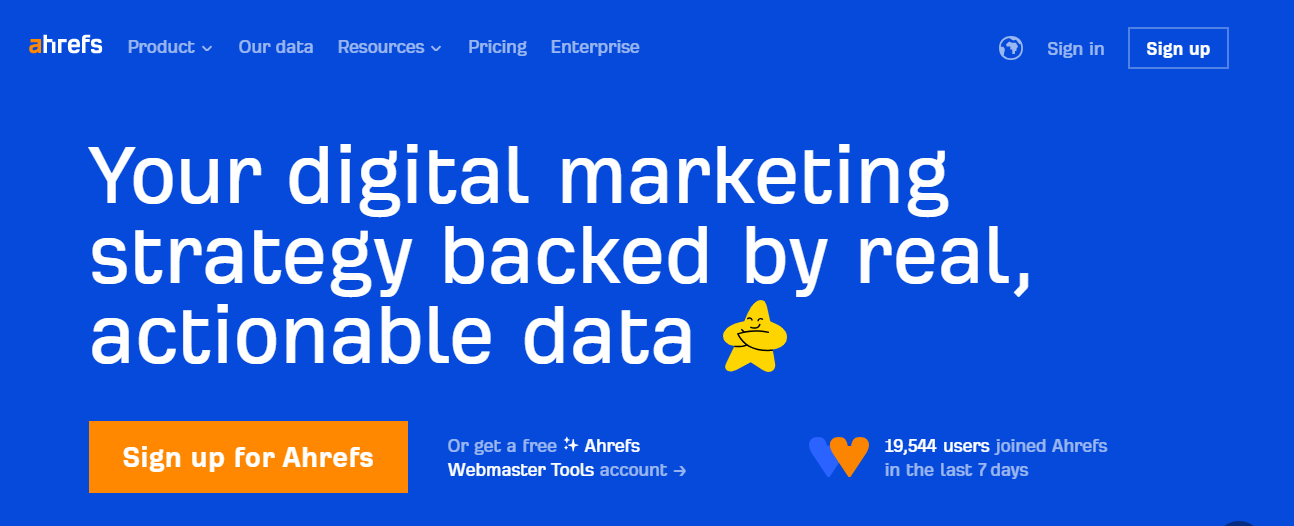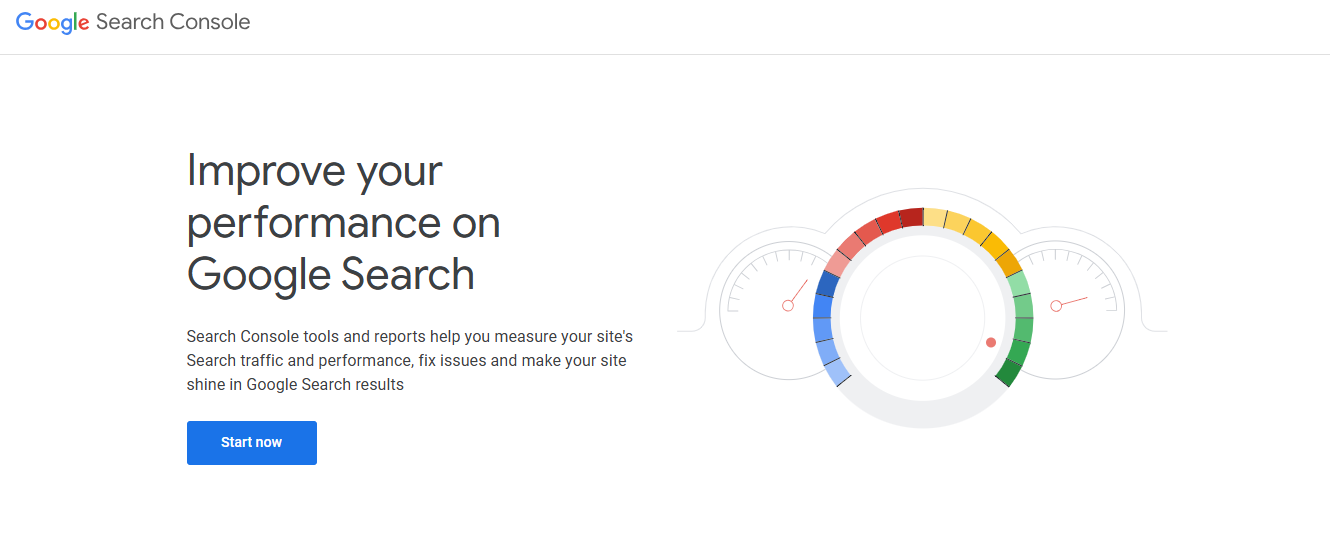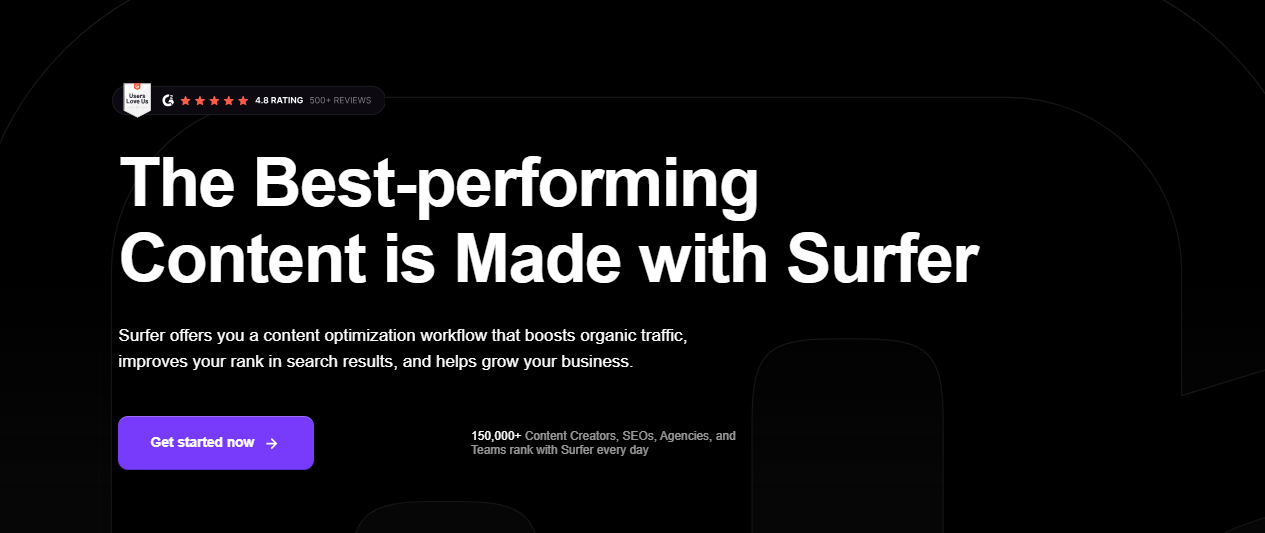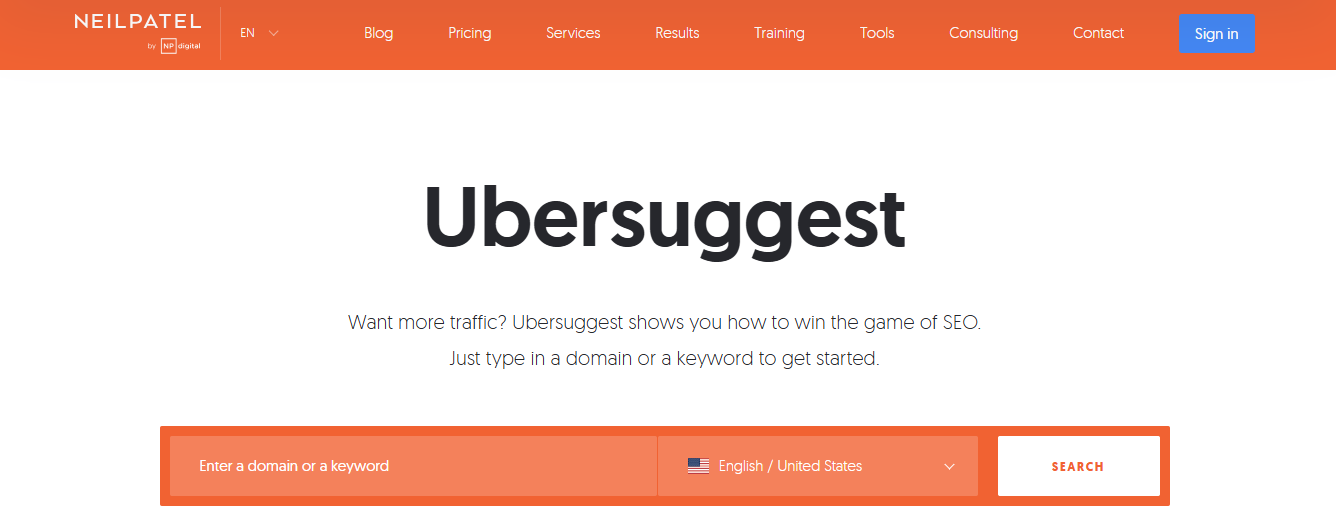- Content gap analysis identifies missing topics and keywords your site should cover to stay competitive.
- It involves competitor research, audience needs, SERP analysis, and performance auditing.
- Tools like Semrush, Ahrefs, and Google Search Console streamline the process and reveal valuable insights.
- Applying findings boosts rankings, topical authority, and user engagement across the funnel.
- Make content gap analysis a recurring part of your SEO strategy to sustain long-term growth.
Is your content failing to rank despite consistent publishing and solid keyword research? You might be missing a critical piece of your SEO strategy: content gap analysis.
Content gap analysis is the process of identifying missing opportunities in your content compared to what your target audience is searching for and what your competitors are already ranking for.
It uncovers the blind spots in your website’s coverage—whether it’s topics you haven’t addressed, keywords you’re not targeting, or areas where your content lacks depth or relevance.
In today’s competitive SEO landscape, simply producing content is no longer enough.
You need to ensure your content fully aligns with your users’ needs, search intent, and the evolving expectations of search engines like Google. That’s where content gap analysis becomes essential.
In this guide, we’ll walk you through exactly what content gap analysis is, why it matters in 2026, how to conduct it effectively, and how to turn those gaps into opportunities for higher rankings, increased traffic, and better user engagement.
Let’s get started.
Find What You’re Not Saying—But Should Be
We uncover hidden keyword and topic opportunities that drive real SEO impact.
Contact UsWhat Is Content Gap Analysis?
Content gap analysis is the process of identifying topics, keywords, or formats your website is missing—especially compared to your competitors—so you can close those gaps and better serve your audience.
It focuses on evaluating what’s already ranking in your niche and uncovering areas where your content is either underperforming, absent, or not meeting search intent.
This approach goes beyond traditional keyword research. Instead of just looking for high-volume terms, it helps you understand what content you should create, update, or expand to offer more comprehensive coverage of your subject matter. It bridges the divide between what your target audience wants and what you’re currently offering.
Whether you’re running a blog, an eCommerce store, or a B2B SaaS company, content gap analysis helps ensure your content answers the right questions, targets the right search terms, and aligns with every stage of the customer journey.
Why Content Gap Analysis Matters for SEO Success
Google’s algorithms continue to evolve, focusing more on content quality, relevance, and topical depth.
Performing a content gap analysis allows you to meet these expectations and improve your visibility in search results.
Here’s why it’s a key part of any successful SEO strategy:
- Uncover hidden keyword opportunities: You can find terms your competitors rank for that you’ve overlooked.
- Improve topical authority: Filling content gaps allows you to build a more complete content ecosystem around your niche.
- Increase engagement and retention: When your content matches what users are looking for, they’re more likely to stay, read, and convert.
- Support E-E-A-T: Demonstrating expertise, experience, authority, and trust requires comprehensive and helpful content. Addressing gaps helps build that trust with both users and search engines.
By consistently identifying and closing these gaps, your site becomes more competitive, more visible, and more useful to your audience.
Types of Content Gaps You Need to Know
Before diving into the analysis process, it’s important to understand the different types of content gaps that can affect your performance:
-
Keyword Gaps
These occur when competitors are ranking for keywords that your site doesn’t target. Often, these are highly relevant search terms you’ve missed or underestimated.
-
Topic Gaps
Your content may lack entire subjects or angles that are important to your audience. For example, you might have articles on SEO tools but not on how to use those tools strategically.
-
Format Gaps
Sometimes, the issue isn’t what you’re saying, but how you’re saying it. If competitors are using videos, infographics, or step-by-step guides while you’re only publishing plain text, that could be a format gap.
-
Depth Gaps
Your content might be surface-level compared to the in-depth guides your competitors offer. Depth gaps affect how useful your content is for more advanced search intent.
-
Audience Gaps
If your content doesn’t address all segments of your audience—such as beginners, intermediates, and experts—you may be leaving value on the table.
A complete strategy considers varying levels of awareness and experience.
Understanding these different dimensions helps guide a more precise and effective content gap analysis process.
Featured Article: What Is SEO Writing? How to Write SEO-Friendly Content in 2026
How to Do a Content Gap Analysis (Step-by-Step)
Performing a content gap analysis involves more than just scanning a few competitor websites.
It’s a strategic, data-driven process that helps you align your content with both user intent and SEO opportunities.
Below is a step-by-step breakdown of how to do it effectively.
Step 1: Identify Your Top SEO Competitors
Start by figuring out who your real competitors are in the search results—not just those in your industry, but those ranking for the keywords you want to target.
Use tools like:
- Semrush
- Ahrefs
- Google Search (manual competitor checks)
- Moz
Enter your domain and find the websites that rank for similar terms. These are your content competitors.
Tip: Don’t assume your business rivals are the same as your SEO competitors. The ones who dominate Google’s first page are the ones influencing your visibility.
Step 2: Collect and Compare Keyword Data
Once you have a list of competitors, analyze the keywords they rank for but you don’t. This is where keyword gap tools are useful.
Use a keyword gap tool to:
- Enter your domain and those of your top 2–5 competitors
- Filter results to show keywords they rank for, but you don’t
- Sort by volume, keyword difficulty, and intent
Focus on keywords that are highly relevant to your offerings but have been overlooked or underutilized in your current strategy.
Step 3: Analyze Competitor Content Strategy
Look beyond keywords and study how your competitors present content. Evaluate:
- Content length and depth
- Use of visuals or interactive elements
- Formatting and structure
- Update frequency
- On-page SEO (titles, meta descriptions, internal linking)
By understanding what’s working for them, you can adopt similar strategies and improve upon them.
Step 4: Audit Your Existing Content
Now turn your attention to your own content. Perform a full content audit to understand:
- Which pages are ranking and for what terms
- Which pages are underperforming
- What topics you’ve already covered
- How well your content matches search intent
Tools like Google Search Console, Screaming Frog, and Surfer SEO can help you gather this data efficiently.
Look for:
- Thin content that needs expansion
- Outdated articles that require updates
- Pages with poor engagement metrics (bounce rate, time on page)
Step 5: Map Gaps to the Buyer’s Journey
A truly effective content strategy aligns with different stages of the customer journey. Map your content (and gaps) to the funnel:
- Awareness: Informational content like how-tos, tips, and explainer posts
- Consideration: Comparisons, case studies, deeper guides
- Decision: Product pages, service pages, testimonials
This will help you identify not just what’s missing, but where it’s missing in the user’s path to conversion.
Step 6: Prioritize Gaps Based on Value
Not all gaps are equal. Prioritize based on:
- Keyword volume and difficulty
- Business relevance and conversion potential
- SERP features (can you win featured snippets?)
- Content freshness needs
Create a content roadmap that targets quick wins first, followed by more competitive or long-form content plays.
Close the Gap, Climb the Rankings
We pinpoint where your competitors are winning—and help you win it back.
Contact UsTools to Make Content Gap Analysis Easier
Conducting a thorough content gap analysis manually is possible, but it’s far more efficient with the help of specialized tools.
These platforms automate the data collection process, reveal insights you may miss by eye, and allow you to focus on strategy and execution.
Here are some of the most useful tools for identifying content gaps and building a stronger SEO presence.
Semrush

Semrush offers a powerful Keyword Gap tool that allows you to compare your domain with up to four competitors. It shows:
- Keywords your competitors rank for, but you don’t
- Common keywords shared between sites
- Keyword intent classification (informational, navigational, transactional)
- SERP features that competitors own
It also provides historical data, helping you track keyword movement over time.
Ahrefs

Ahrefs‘ Content Gap tool is similar in function but especially strong in backlink and content performance metrics. With it, you can:
- Identify missing keywords based on competitor rankings
- Filter by keyword difficulty, volume, and traffic potential
- See which pages on your competitors’ sites rank for those keywords
- Analyze link profiles to understand why certain content ranks better
Ahrefs is particularly useful for understanding the authority dynamics behind top-performing pages.
Google Search Console

While Google Search Console is limited to your own site, it’s excellent for identifying:
- Keywords your content currently ranks for but doesn’t perform well on
- Pages with high impressions but low click-through rates
- Underperforming queries on existing pages
This internal insight helps you improve existing content before creating new material.
Surfer SEO

Surfer SEO combines keyword data with content scoring and SERP analysis. You can:
- Audit existing pages for missing terms
- Compare your content with top competitors in real time
- Get on-page recommendations to improve topical coverage
It’s ideal for both gap analysis and on-page optimization.
Clearscope

Clearscope helps ensure your content is topically comprehensive by analyzing what the top-ranking pages are including and suggesting similar keywords.
It’s best used once you’ve identified a gap and want to ensure your new content covers all important angles.
Ubersuggest

A budget-friendly alternative, Ubersuggest by Neil Patel offers keyword gap features and competitive analysis. It’s more suitable for beginners or those managing smaller websites.
Comparison Snapshot
| Tool | Best For | Unique Advantage |
| Semrush | Keyword and domain comparison | Broad database and keyword intent analysis |
| Ahrefs | SERP and backlink context | In-depth competitor content page insights |
| GSC | Existing site audit | Real user data straight from Google |
| Surfer SEO | On-page optimization | Real-time SERP-based recommendations |
| Clearscope | Content optimization | High-quality topical coverage suggestions |
| Ubersuggest | Basic gap analysis | Accessible and user-friendly interface |
Choosing the right tool—or combination of tools—depends on your budget, site size, and how granular you want your analysis to be.
If You’re Not Covering It, Someone Else Is
Let us find and fill your content blind spots before your competition does.
Contact UsContent Gap Analysis Use Cases
Content gap analysis is a versatile strategy that can benefit websites across industries and business models.
Whether you run a SaaS company, an eCommerce platform, a blog, or a local service business, identifying and filling content gaps can lead to stronger visibility, better engagement, and higher conversions.
Here are several common use cases where content gap analysis delivers real results.
-
B2B SaaS
In B2B SaaS, buyers typically go through a long decision-making process.
A content gap analysis can help identify missing content across all stages of the funnel—from educational resources at the top, to product comparisons and case studies at the bottom.
Use cases:
- Finding missing integrations or feature pages
- Creating content that supports industry-specific use cases
- Expanding FAQ and support content to reduce churn
-
eCommerce
For online stores, content gaps often involve missing informational content that could attract and convert shoppers.
Many eCommerce sites only focus on product descriptions, leaving out buying guides, comparisons, or how-to content.
Use cases:
- Adding blog posts that answer common customer questions
- Creating landing pages for product categories with search volume
- Identifying seasonal or trend-based keywords not yet targeted
-
Local SEO and Service-Based Businesses
Service businesses can use content gap analysis to find geographic or service-specific topics they’re not covering—especially important for ranking in local search.
Use cases:
- Targeting “near me” and local intent keywords
- Addressing service-specific questions potential clients ask
- Creating neighborhood- or region-specific landing pages
-
Affiliate Marketing Sites
Affiliate marketers depend on search visibility to drive traffic and clicks.
Content gap analysis ensures they aren’t missing high-converting keywords and helps maintain a competitive edge in crowded niches.
Use cases:
- Uncovering product comparison keywords not yet targeted
- Expanding content to include alternatives, buyer guides, or pros and cons
- Enhancing informational content that leads to affiliate pages
-
Content Publishers and Bloggers
Bloggers and content publishers often have large content libraries but may struggle with underperforming posts. Gap analysis helps optimize these assets and discover untapped topics.
Use cases:
- Refreshing outdated posts with new data and keywords
- Creating content clusters around high-performing cornerstone articles
- Filling in subtopics that top-ranking competitor posts include
Regardless of your business model, content gap analysis gives you the insights needed to build a more complete and competitive content strategy.
Stop Guessing What to Write Next
Our data-backed content gap analysis shows you exactly what your audience is searching for.
Contact UsBest Practices for Filling Content Gaps
Identifying content gaps is only the first half of the equation. To see real results, you need to act strategically when filling them.
Below are best practices to help ensure your efforts translate into improved rankings, better engagement, and long-term SEO growth.
-
Match Content to Search Intent
When creating or updating content to fill a gap, always consider why someone is searching for that keyword. Are they looking for information, a solution, a comparison, or a product?
- Use informational content for awareness-stage queries (“how,” “what,” “why”).
- Use commercial or transactional content for decision-stage keywords (“best,” “vs,” “reviews,” “buy”).
- Check the current top-ranking pages to gauge intent—Google often tells you what kind of content works best.
-
Align With Topical Authority
Instead of treating each gap as a standalone piece, build content clusters that support broader topics. This strengthens your topical authority and internal linking structure.
For example, if you’re filling a gap for “SEO for lawyers,” also create supporting content like:
- “Best SEO tools for law firms”
- “Local SEO strategies for attorneys”
- “How to write legal blog content for SEO”
Use internal links to connect these posts to a central pillar page.
-
Optimize for Featured Snippets
When targeting informational gaps, structure your content to win featured snippets:
- Use bullet points, numbered lists, tables, and direct definitions.
- Include questions as subheadings (e.g., “What is [topic]?”).
- Keep answers concise and clear within the first few sentences of a section.
Snippets offer high visibility and can help you leapfrog competitors even if they have stronger domain authority.
-
Refresh and Expand Existing Content
Filling a gap doesn’t always require new content. Often, it’s more effective to update and expand what you already have.
Look for:
- Thin or outdated articles that lack relevant subtopics
- Pages that rank on page 2 or 3 but could improve with better coverage
- Posts with high impressions but low clicks (optimize titles and meta descriptions)
Use tools like Google Search Console, Surfer SEO, or Clearscope to guide content updates.
-
Don’t Neglect Content Format
Sometimes, the gap isn’t in the topic but in how it’s presented. Google favors diverse content formats depending on query type. Consider:
- Videos for how-tos and tutorials
- Infographics for stats and comparisons
- Interactive tools (calculators, quizzes)
- Downloadable guides or checklists
Diversifying your formats helps you reach different types of learners and can open doors to additional rankings through YouTube, image packs, and more.
-
Monitor Results and Iterate
After publishing or updating content, continue monitoring performance:
- Track keyword rankings, traffic, and engagement metrics
- Watch how newly added content influences the performance of related pages
- Look for gaps that emerge over time as search behavior and SERPs evolve
Content gap analysis isn’t a one-time fix—it’s an ongoing process that should be integrated into your SEO workflow.
Final Thoughts: Turning Gaps Into Growth
Content gap analysis isn’t just an SEO tactic—it’s a growth framework. By identifying what your site lacks and aligning your content with real user intent, you don’t just chase rankings; you build a more complete, useful, and competitive presence online.
Done right, content gap analysis helps you:
- Attract new audiences by ranking for untapped keywords
- Deepen topical authority in your niche
- Improve user experience and engagement
- Support every stage of the customer journey
- Convert more traffic into leads and customers
It also forces you to think like your competitors—but act smarter. Instead of copying their content, you build something better, more relevant, and more targeted to your unique audience.
Content gaps are opportunities. The brands that identify and fill them early don’t just compete—they lead.
To stay ahead, make content gap analysis a recurring part of your content strategy. Review, adjust, and expand your content every quarter. Over time, you’ll not only outrank competitors—you’ll outgrow them.
Don’t Just Compete—Complete Your Strategy
With Nexa Growth’s content gap analysis, your content becomes unstoppable.
Contact Us
